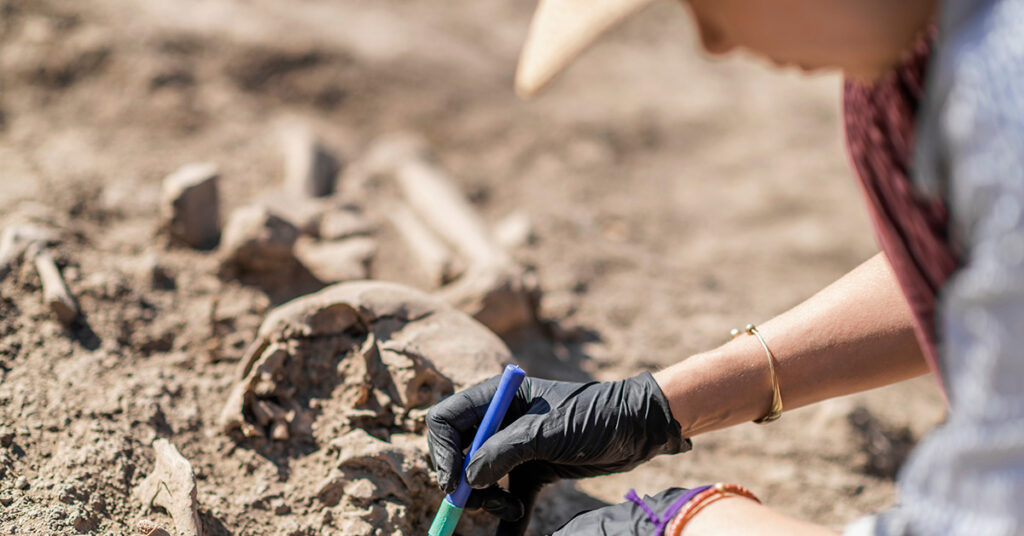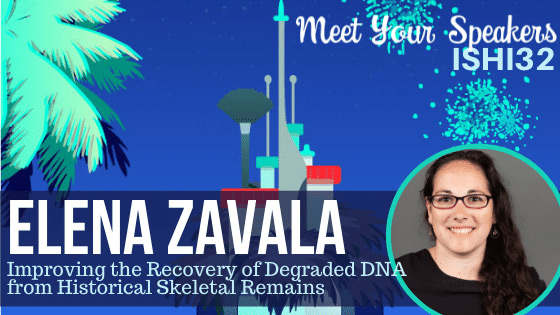What makes humans “human”?

On October 3, 2022, the Nobel Assembly at Karolinska Institutet announced the 2022 Nobel Prize in Physiology or Medicine had been awarded to Svante Pääbo, director of the Department of Genetics at the Max Planck Institute for Evolutionary Anthropology in Leipzig, Germany. The Assembly cited his “discoveries concerning the genomes of extinct hominins and human evolution”. They mentioned the highlight of his research: the seemingly impossible task, at the time, of sequencing the Neanderthal genome. The discoveries that followed from this sequencing project continue to redefine our understanding of modern human origins.
The award showcases the technological advancements made in the analysis of ancient DNA. However, Pääbo’s research had an inauspicious beginning. In 1985, he published the results of his early work, cloning and sequencing DNA fragments from a 2,400-year-old Egyptian mummy (1). Unfortunately, later analysis revealed that the samples could have been contaminated by the researchers’ own DNA (2).
Sequencing Ancient Hominin Genomes
This setback only seemed to strengthen Pääbo’s resolve to continue his quest for unlocking the mysteries of ancient DNA. He described the challenges associated with amplifying DNA by the polymerase chain reaction (PCR) but also outlined strategies to combat these problems (2). In 2006, Pääbo and colleagues announced the launch of the Neanderthal Genome Project (NGP). The project was supported by 454 Life Sciences, developer of the first commercially available next-generation sequencing (NGS) technology. The ground-breaking collaboration among the Max Planck Institute for Evolutionary Anthropology, 454 Life Sciences and Institute of Quaternary Paleontology and Geology, Croatian Academy of Sciences and Arts soon resulted in a breakthrough. In 2006, the teams published a partial Neanderthal genome—over one million bases of nuclear DNA sequence obtained from samples of a 38,000-year-old Neanderthal fossil that was exceptionally free of modern human DNA contamination (3).
When working with historical samples, sequencing mitochondrial DNA (mtDNA) is often the first step in identification, because mtDNA is relatively abundant compared to nuclear DNA and more likely to survive over prolonged periods of time (4). Using high-throughput sequencing technology from 454 Life Sciences, the NGP researchers published the complete Neanderthal mtDNA genome in 2008 (5). This technological feat—remarkable at the time—used DNA extracted from a sample of bone that weighed less than 0.3g, from a 38,000-year-old Neanderthal individual. Based on their sequence analysis, the researchers estimated that Neanderthal mtDNA diverged from modern human mtDNA approximately 660,000 years ago.

Working with ancient DNA poses unique challenges for researchers, especially in forensic identification. Elena Zavala, PhD, former graduate student at the Max Planck Institute for Evolutionary Anthropology, presented a summary of her work with historical samples at the 32nd International Symposium for Human Identification. Read an interview to learn more about the challenges of sequencing ancient DNA and the technologies that make analysis of these samples possible.
Neanderthal Genome Sequencing Settles Controversy
The technological advancements made during the Neanderthal mtDNA sequencing project led to publication of the first draft sequence of the Neanderthal nuclear DNA genome, over 4 billion bp, in 2010 (6). The researchers isolated DNA from the bones of three Neanderthal individuals and compared the genomic sequence data with that from five modern humans. These comparisons allowed identification of anatomical features that fully distinguish modern humans from other hominins. The research addressed the controversy over whether Neanderthals interbred with modern humans—something that could not be established from the mtDNA genome alone. The results showed that Neanderthals contributed 1%–4% of the genome of modern humans in Europe and Asia. Detailed analysis of the genomic data provided several possible scenarios for when interbreeding between Neanderthals and modern humans occurred. The most likely explanation was that interbreeding occurred between 50,000 to 80,000 years ago after modern humans began migrating from Africa, but before they diverged into European, East Asian and Papuan population groups.
A month earlier, researchers had published the complete mtDNA genome of another group of hominins that shared a common ancestor with Neanderthals and modern humans (7). These hominins were named Denisovans, for the Denisova Cave in Siberia where the bone was excavated. Partial sequencing of the Denisovan nuclear genome (8) followed by high-coverage sequencing data (9) suggested that, although they coexisted with Neanderthals and modern humans, Denisovans had an evolutionary history distinct from Neanderthals. In contrast to the Neanderthal genetic contribution to all populations outside Africa, the data showed the Denisovan contribution is limited to the island populations of Southeast Asia and Oceania.
Implications for Modern Humans
Why are these ancient genomes so important today? They can have surprising implications for human genetics and medicine. For example, a study showed that a genetic cluster associated with severe symptoms after COVID-19 infection is inherited from Neanderthal DNA (10). While some Neanderthal-inherited traits are responsible for deleterious effects, others have benefits, such as helping modern humans better adapt to their environments and playing a role in antiviral immune responses, including a protective role against COVID-19 (reviewed in 11).
Further research will undoubtedly uncover more ways in which Neanderthal DNA has influenced the modern human genome and add to the definition of what makes us human. Lessons about our origins from ancient DNA will help understand our present and provide us with opportunities to shape our future.
Learn how the Spectrum CE System with 8-color support makes it possible to obtain forensic information from ancient DNA samples.
References
- Pääbo, S. (1985) Molecular cloning of Ancient Egyptian mummy DNA. Nature 314, 644–645.
- Pääbo, S. et al. (2004) Genetic analyses from ancient DNA. Annu. Rev. Genet. 38, 645–679.
- Green, R.E. et al. (2006) Analysis of one million base pairs of Neanderthal DNA. Nature 444, 330–336.
- Merheb, M. et al. (2019) Mitochondrial DNA, a powerful tool to decipher ancient human civilization from domestication to music, and to uncover historical murder cases. Cells 8, 433.
- Green, R.E. et al. (2008) A complete Neandertal mitochondrial genome sequence determined by high-throughput sequencing. Cell 134, 416–426.
- Green, R.E. et al. (2010) A draft sequence of the Neandertal genome. Science 328, 710–722.
- Krause, J. et al. (2010) The complete mitochondrial DNA genome of an unknown hominin from southern Siberia. Nature 464, 894–897.
- Reich, D. et al. (2010) Genetic history of an archaic hominin group from Denisova Cave in Siberia. Nature 468, 1053–1060.
- Meyer, M. et al. (2012) A high-coverage genome sequence from an archaic Denisovan individual. Science 338, 222–226.
- Zeberg, H. and Pääbo, S. (2020) The major genetic risk factor for severe COVID-19 is inherited from Neanderthals. Nature 587, 610–612.
- Reilly, P.F. et al. (2022) The contribution of Neanderthal introgression to modern human traits. Curr. Biol. 32, R970–R983.
Latest posts by Ken Doyle (see all)
- Will Artificial Intelligence (AI) Transform the Future of Life Science Research? - February 1, 2024
- RAF Inhibitors: Quantifying Drug-Target Occupancy at Active RAS-RAF Complexes in Live Cells - September 5, 2023
- Synthetic Biology: Minimal Cell, Maximal Opportunity - July 25, 2023

One thoughtful comment